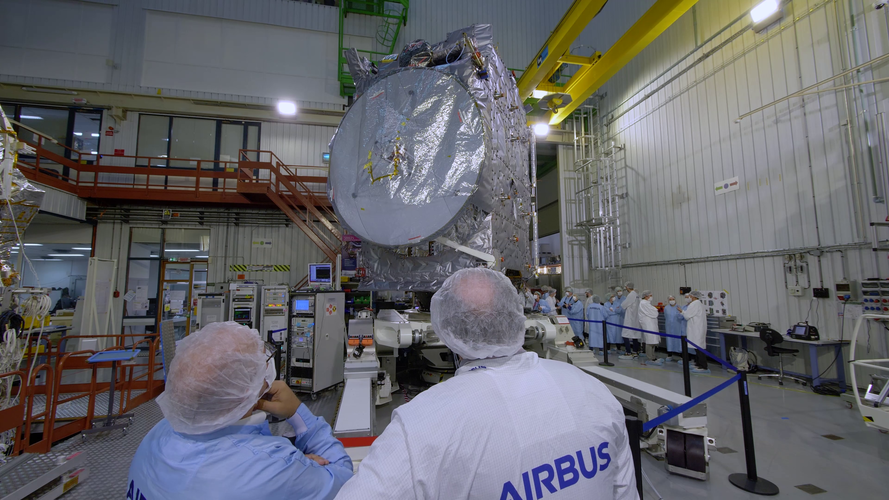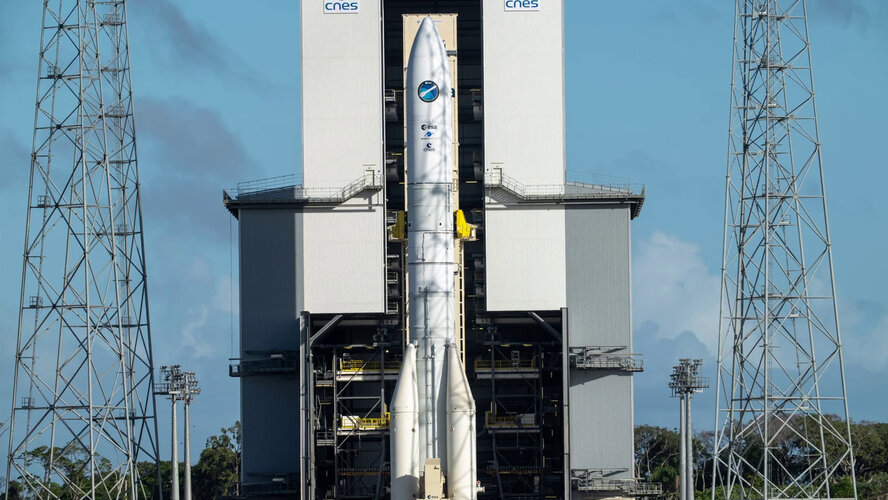
Copernical Team
NASA's future space exploration bolstered by major plutonium-238 delivery
 The U.S. Department of Energy's (DOE) recent achievement in shipping a substantial amount of heat source plutonium-238 to the Los Alamos National Laboratory signifies a pivotal advancement for NASA's future space missions. This latest shipment, consisting of 0.5 kilograms (a little over 1 pound) of new heat source plutonium oxide, is noteworthy as the largest since the domestic restart of pluton
The U.S. Department of Energy's (DOE) recent achievement in shipping a substantial amount of heat source plutonium-238 to the Los Alamos National Laboratory signifies a pivotal advancement for NASA's future space missions. This latest shipment, consisting of 0.5 kilograms (a little over 1 pound) of new heat source plutonium oxide, is noteworthy as the largest since the domestic restart of pluton GalaxySpace to boost mobile broadband with new-gen satellite technology
 Chinese commercial space company GalaxySpace is currently developing a new-generation communication satellite, poised to enhance broadband communication capabilities for mobile phones by allowing direct connectivity to satellites. This development was recently reported by the Science and Technology Daily, shedding light on an innovative approach in the field of space-based communication.
G
Chinese commercial space company GalaxySpace is currently developing a new-generation communication satellite, poised to enhance broadband communication capabilities for mobile phones by allowing direct connectivity to satellites. This development was recently reported by the Science and Technology Daily, shedding light on an innovative approach in the field of space-based communication.
G PRIME-1 Simulation
 On November 2, 2023, a significant step was taken towards the upcoming Polar Resources Ice Mining Experiment-1 (PRIME-1) mission, as engineers gathered at NASA's Kennedy Space Center in Florida for an essential simulation training. The session, held in the Neil Armstrong Operations and Checkout Building, was crucial for integrating the efforts of the diverse team working on PRIME-1, a mission th
On November 2, 2023, a significant step was taken towards the upcoming Polar Resources Ice Mining Experiment-1 (PRIME-1) mission, as engineers gathered at NASA's Kennedy Space Center in Florida for an essential simulation training. The session, held in the Neil Armstrong Operations and Checkout Building, was crucial for integrating the efforts of the diverse team working on PRIME-1, a mission th Report Forecasts Significant Growth in Hypersonic Flight Market by 2030
 A recent report titled "Hypersonic Flight Market by Vehicle Type (Hypersonic Aircraft, Hypersonic Spacecraft), Industry (Military, Space, Commercial), Component (Propulsion, Aerostructure, Avionics) and Region (North America, Europe, APAC, RoW) - Global forecast to 2030" has been published by ResearchAndMarkets.com. The report projects the hypersonic flight market to grow from USD 782 million in
A recent report titled "Hypersonic Flight Market by Vehicle Type (Hypersonic Aircraft, Hypersonic Spacecraft), Industry (Military, Space, Commercial), Component (Propulsion, Aerostructure, Avionics) and Region (North America, Europe, APAC, RoW) - Global forecast to 2030" has been published by ResearchAndMarkets.com. The report projects the hypersonic flight market to grow from USD 782 million in A major boost for space skills and research in North East England
 In a significant development for the UK's space sector, Northumbria University, Newcastle, has announced the establishment of a new space skills, research, and technology centre, dubbed the North East Space Skills and Technology Centre (NESST). This initiative represents a substantial investment in the region's future in space technology and education, with the centre poised to become a key play
In a significant development for the UK's space sector, Northumbria University, Newcastle, has announced the establishment of a new space skills, research, and technology centre, dubbed the North East Space Skills and Technology Centre (NESST). This initiative represents a substantial investment in the region's future in space technology and education, with the centre poised to become a key play A nanosatellite and a hot air balloon for emergency broadband anywhere
 Ninety-five per cent of the planet's population has access to broadband internet, via cable or a mobile network. However, there are still some places and situations in which staying connected can be very difficult. Quick responses are necessary in emergency situations, such as after an earthquake or during a conflict. So too are reliable telecommunications networks that are not susceptible to ou
Ninety-five per cent of the planet's population has access to broadband internet, via cable or a mobile network. However, there are still some places and situations in which staying connected can be very difficult. Quick responses are necessary in emergency situations, such as after an earthquake or during a conflict. So too are reliable telecommunications networks that are not susceptible to ou Ariane 6 hot-fire test: the replay
 Video:
00:08:32
Video:
00:08:32
On 23 November 2023, in preparation for its first flight, Ariane 6 went through its biggest test to date: a full-scale rehearsal that meant complex fuelling, a launch countdown and ignition of the core stage Vulcain 2.1 engine, followed by over seven minutes of engine burn that covered the entire core stage flight phase, just as would happen during a real launch into space.
The engine roared into action after a slight anomaly meant there was a suspenseful pause to the automated sequence, before the countdown was reset and began to tick again. The live feed continued until
The making of Juice: the film
 Video:
02:02:28
Video:
02:02:28
One giant planet. Three icy moons. An eight-year journey. One special spacecraft.
Building a mission to Jupiter took years of planning and thousands of people. Now that Juice is finally en route to its destination, we go behind the scenes to discover the story of the making of Juice.
The film features exclusive interviews with scientists and engineers from across Europe, as well as backstage footage from the planning, testing and launch of this once-in-a-generation mission.
Follow the final three years of Juice’s life on Earth. Discover why the mission was named Juice, how teams working on the spacecraft handled
Ariane 6 mobile building rolling timelapse
 Video:
00:01:14
Video:
00:01:14
On 23 November 2023 the Ariane 6 rocket test model at Europe’s Spaceport in French Guiana was prepared for a combined hot-fire test to test its core stage and main engine for eight minutes of firing – the full duration of a launch.
The mobile building weighs 8200 000 kg – heavier than France's Eiffel Tower. Its platforms provide access to the rocket before a launch. It protects Ariane 6 until its doors are opened and is retracted before a launch or test. The mobile gantry stands on 16 bogies with eight wheels each and every wheel is


